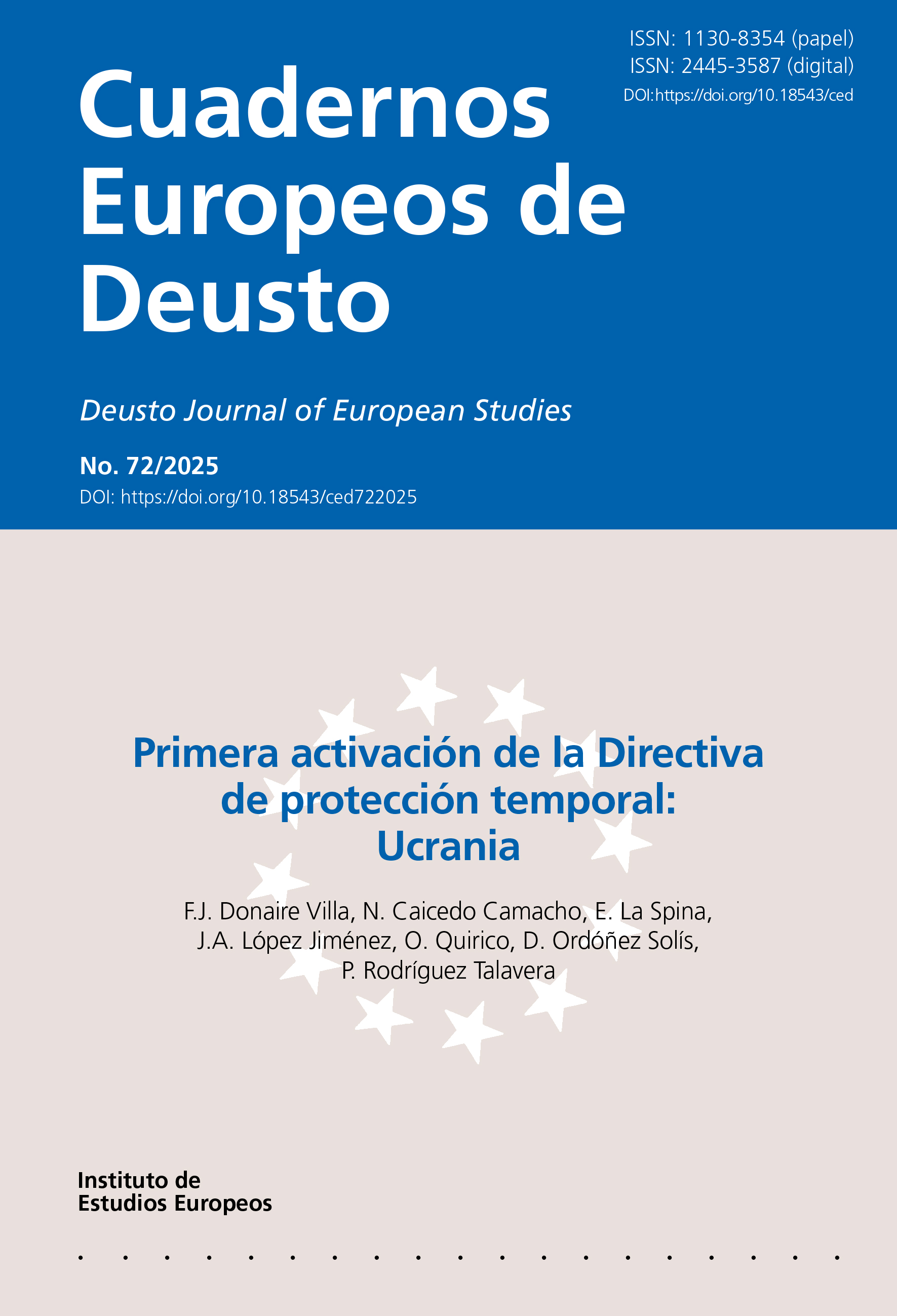Displaced persons from Ukraine and their reception process in the European Union and Spain
Abstract
Since 4 March 2022, the activation of the Temporary Protection Directive for displaced persons from Ukraine marked an unprecedented milestone in the European immigration and asylum agenda. Since then the debate on the temporary protection regime has mostly focused on a broad critical literature review of the beneficiaries, the guaranteed rights and the applicable legal framework for displaced persons from Ukraine. However, the legal framework of Directive 2001/55/EC and the implementation of the temporary protection procedure by Decision (EU) 2022/382 also require a careful reading with regard to the development of the immediate reception modality. It is not a coincidence that, after three years since the activation of the temporary protection regime, the reception processes highlight the legitimacy and the impact of certain double standards, certain opportunities and some paradoxes, as well as the practical challenges of this immediate response not only at the European level but also in each Member State. Paying attention at the reception-integration processes in Spain, this paper tries to make visible the consequences derived from the differentiated management for the beneficiaries of temporary protection.
Received: 17 December 2024
Accepted: 15 January 2025
Downloads
The author grants to the Publisher the distribution, public communication, and reproduction rights of her/his work subject of publication in Deusto Journal of European Studies (DJES), whichever the media may be, including the permission to include it in the databases where this Journal is indexed and in the institutional repository of the Universidad de Deusto.
Upon its publication, the content of any Issue of Deusto Journal of European Studies (DJES) can be accessed, read, downloaded, copies, and distributed freely for non-commercial purposes and in accordance with any applicable copyright legislation.
The content of Deusto Journal of European Studies (DJES) can be subsequently published in other media or journals, as long as the author clearly indicates in the first footnote that the work was published in Deusto Journal of European Studies (DJES) for the first time, indicating the Issue number, year, pages, and DOI (if applicable). Any other use of its content in any medium or format, now known or developed in the future, requires prior written permission of the copyright holder.
The content of the work published in Deusto Journal of European Studies (DJES) is each author's sole responsibility. The authors assume the responsibility of obtaining all the necessary licenses for the reproduction in their manuscripts of any text, material or illustration coming from another author, institution or publication. The liabilities that may arise from complaints for publishing plagiarised articles are the sole responsibility of the author.


3.jpg)
2.jpg)
2.jpg)
2.jpg)
2.jpg)
2.jpg)







